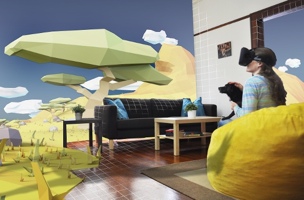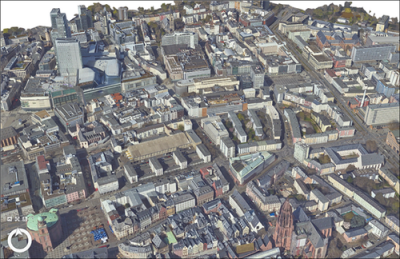Photo Source: Paracosm
What is “deep” augmented reality?
Think of it this way: On one end of the spectrum, you would have very “shallow” AR, like a heads-up display that shows information about what you’re looking at, overlaid on top of your view. It’s simply there for you to look at, but not interacting with the real world. On the other end of the spectrum, you would have “deep” AR, where that digital information interacts with the real world in realistic, meaningful ways. It presents digital information that feels like it exists in the real world.
The folks over at Paracosm wrote a blog explaining why 3D mapping tech is crucial for producing this kind of “deep” augmented reality experience.
First, the author explains, 3D mapping enables an AR device to use realistic physics. “When game engines have a detailed 3D map of an environment, they can use simulated physics to allow virtual objects to behave as if they were real and obey our Earthly laws. For example, if we dropped virtual kittens on your coffee table, they could interact with your coffee table and the objects on it as if those tiny, adorable, rubbery kittens were real.”
Next, 3D mapping tech enables an AR device to present real occlusion & lighting. If you’re playing a game, the author explains, and the object you’re chasing dips behind a couch, you want to see it actually dip behind the couch in your AR view. “Little things, like shadows and reflections, need to affect virtual objects in the same ways they would in the real world. Otherwise, the magic is spoiled.”
The other two examples they give, “Real-World AI,” and “Tailored Experiences,” seem to derive from these first two.
A big question, then, is: Will this be useful to us? Maybe.
The problem of displaying digital information in a way that people can understand is a big one. Just ask website designers. Now remember that they work with 2D information stuck on a screen, not 3D information interacting with the real world in real time as you move through it. Those factors compound the challenge exponentially.
As our digital world starts to invade our real world, we’re going to need to get sly about the way we present digital information so that our brains can process it, so that it feels intuitive rather than overwhelming. This is going to be important for those of us who work with huge amounts of complex spatial information–and it looks like 3D mapping might be the way forward.






